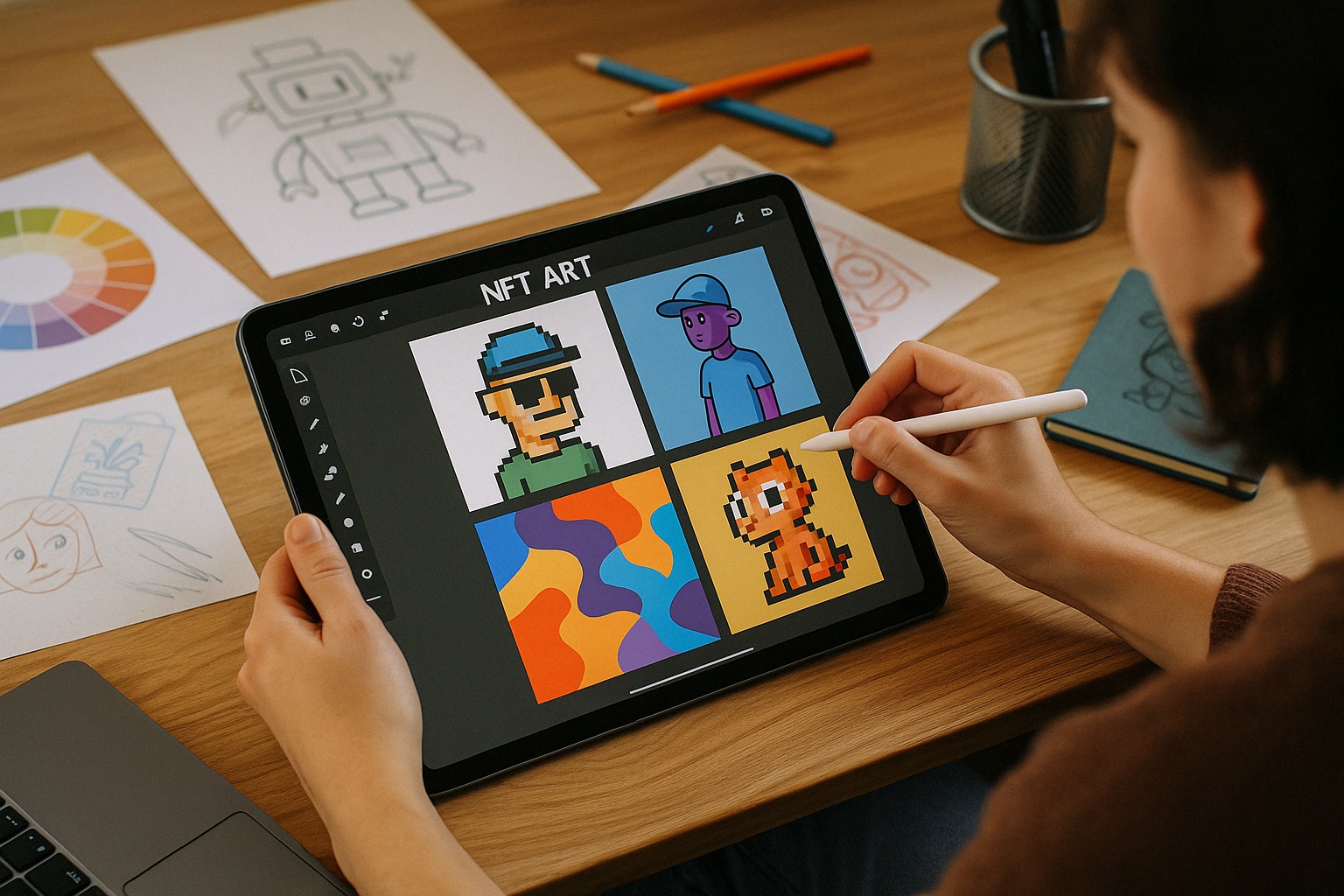NFT art has introduced a new wave of creativity to the digital space. Artists from around the world are using blockchain technology not just to sell work, but to reimagine how it’s created, owned, and experienced. One of the most exciting things about NFTs is the wide variety of styles they support. From hand-drawn illustrations to generative designs, NFT art pushes past traditional categories.
What makes NFT art styles interesting isn’t just how they look. It’s how they blend storytelling, culture, and technology. Artists are not limited by canvas size or printing techniques. They can work with motion, sound, interaction, and layers of data that add meaning to each piece.
A Look at What Defines NFT Art
This article takes a look at popular and emerging NFT art styles, showing how digital creators are shaping their own lanes. It highlights different approaches—from clean vector art to experimental glitch visuals—and offers insight into what makes each one unique.
You’ll see how these styles speak to collectors and communities, and why having a sense of visual identity matters in the fast-moving world of NFTs.
Pixel Art
Pixel art remains one of the most recognizable styles in the NFT world. It draws inspiration from early video games and computing culture, relying on a grid-based format to build characters, landscapes, and objects. Artists often use a limited palette to bring simplicity and charm to their work.
This style’s popularity comes from its nostalgic feel and ease of reproduction across collections. Projects like CryptoPunks helped define the space by proving that even minimalist visuals can hold deep value and cultural weight.
Generative Art
Generative art combines creative vision with algorithmic rules. Artists write code that determines how shapes, colors, and textures are arranged. Each NFT in a collection is generated from a set of variables, creating visual outputs that are both predictable and unique.
This style is powerful for large collections. It allows artists to scale while maintaining originality. Viewers can explore patterns, symmetry, randomness, and repetition—all shaped by logic instead of hand-drawn effort.
Collections built with generative scripts often carry themes or constraints. The final images are visual reflections of the code behind them, which adds another layer of meaning for tech-minded collectors.
Hand-Drawn Illustrations
Many NFT creators stick to more traditional drawing techniques—digital brushes, sketch tools, and tablets—to produce hand-drawn illustrations. These works feel personal and expressive, with visible brushstrokes and textures that mimic physical media.
Hand-drawn styles bring warmth and character to the blockchain. Whether it’s whimsical creatures, portrait studies, or detailed landscapes, these pieces highlight the artist’s individual skill and style.
Collectors are drawn to these NFTs for the same reason people love original paintings. Each one tells a story through lines, colors, and choices that only that artist could make.
3D and Motion Graphics
Three-dimensional art has also taken hold in the NFT space. Using software like Blender or Cinema 4D, artists build dynamic scenes that move, rotate, or respond to light in lifelike ways. Motion adds depth, and animation breathes life into static images.
3D art is especially popular in fashion, virtual reality, and gaming communities. These pieces often look futuristic, combining sleek surfaces with imaginative concepts. Some NFTs take the form of short animated loops, while others link to fully immersive experiences.
Because of their size and complexity, these works may require advanced file storage or playback methods, but the visual payoff can be striking.
Glitch and Experimental Styles
Glitch art leans into visual errors—distortions, pixel breaks, or unexpected patterns. Rather than fixing what looks wrong, glitch artists embrace chaos as part of the creative process. The results feel raw and energetic, like digital rebellion against smooth design norms.
This style often reflects themes of digital overload, identity, or deconstruction. It connects well with artists who like to explore tech culture critically, asking questions about how we engage with media.
Experimental works might also use sound, interactivity, or live updates to stay fluid over time. These NFTs feel more like digital performances than static objects.
Photography
Photography in NFTs covers a wide range—from classic street shots to surreal edits and collages. Photographers mint their work to give it traceable ownership, expanding their reach and offering collectors a way to own original editions.
This medium benefits from clear resolution, storytelling, and emotional tone. Some artists use photography to document specific regions or themes, while others blend it with digital overlays and effects.
The NFT format allows photographers to control edition numbers, track resales, and share work globally without relying on galleries or print shops.
Minimalism and Abstract Forms
Not all NFT art goes big or detailed. Minimalist styles use clean lines, geometric shapes, and muted colors to create calm and focused pieces. Abstract work often removes narrative, encouraging viewers to respond based on color and form alone.
These styles work well for collectors who prefer open interpretation or who enjoy clean visual rhythm. They can feel timeless and modern, and often stand out in collections crowded with louder visuals.
Abstract and minimalist NFTs can also serve as visual statements—pieces that reflect balance, contrast, or motion without depending on characters or context.
Mixed Media and Collage
Digital collage brings together bits of imagery, scanned materials, textures, and effects into one layered composition. Artists may combine photography, drawing, 3D renderings, and even AI-generated content to create rich, chaotic visuals.
This approach often carries a sense of storytelling or commentary. It blends past and future, memory and imagination, to form something that feels both personal and universal.
Mixed media NFTs often push boundaries and invite strong reactions, which makes them ideal for collectors who enjoy visual complexity and bold design.
NFT art isn’t defined by one style. It’s a growing canvas that supports many ways of seeing, thinking, and creating. Whether you’re into clean lines or layered noise, hand-drawn charm or algorithmic precision, there’s space for every kind of expression. As the community grows, these styles help artists build identity and help collectors connect with art that truly resonates.

No Responses